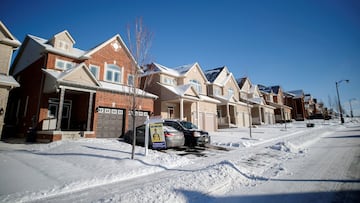What are the three types of mortgages in the US, and what are the differences?
In the market for a new house? Here are some of your options when it comes to accessing a mortgage.

When purchasing a house, there are three main types of mortgages to choose from: fixed-rate, conventional, and standard adjustable rate. All have different benefits and shortcomings that assist various homebuyer profiles. For first-time or low-income buyers, there are also government loan financing options that will also be touched upon.
Fixed-Rate
Those looking to make a continuous payment worth the same amount throughout the life of the mortgage, a fixed-rate loan is a good option.
The owner will pay the same amount to the bank each month because the interest rate applied will not change.
A fixed-rate loan has some advantages, one being that while the rate paid may be higher that those with adjustable rate mortgages. But, since a buyer could be making the same payment for thirty-years, it is likely that the value of that payment decreases over time. Money in the future is worth less than money now because it has not been subjected to inflation.
Banks will often charge an interest rate higher than those applied to adjustable-rate mortgages to compensate for this possible loss. Many will usually pay more interest on a fixed-rate mortgage if they choose a thirty-year option.
Conventional mortgages
Conventional thirty-year fixed-rate mortgages are the most common home loan offered in the United States. While they have a fixed rate, not all fixed-rate mortgages are conventional.
Those with excellent credit and a low debt-to-income ratio can access special mortgages through financers Fannie Mae or Freddie Mac. With these loans, less money is needed up front, and many borrowers can get away with putting only three percent down after their offer is accepted. While interest rates for these loans are typically higher than fixed-rate, the overall borrowing costs tend to be lower.
What is recasting?
It is essential to check with your mortgage provider to see if re-casting is an option before you opt to pay more on your mortgage if flushed with some extra cast or just interested in putting a bit of saving towards one of your payments.
Only if your mortgage is recast will the bank allow you to change the value of your monthly mortgage payments.
It is not to say that you will have to pay for thirty years regardless of it if you pay more throughout the life of the mortgage. However, unless your mortgage is recast, the bank will not alter the amount that must be paid each month; so, just because one pays more each month does not mean that the amount required by the bank will change. This is not an option for all mortgages and could be important when selecting yours.
Adjustable-Rate Mortgage
With an adjustable-rate mortgage, what one pays is tied to the national and market interest rates. If if rates go up, so does one’s payment, but if they go down, they will see the benefits. Typically, banks will offer a fixed rate for the first few years of the mortgage, and then the adjustable rate will kick in around year seven.
Often the rates will be subject to change every six months once the fixed-rate era ends. These loans are best for those who do not think they will hold onto the property for many years but assume that the asset will appreciate. In most cases, the rate offered for the first few years of the loan will be lower than those provided to owners receiving a fixed-rate loan.
Government-backed mortgages
Through various government agencies, including the Federal Housing Administration (FHA), the U.S. Department of Agriculture (USDA, and the U.S. Department of Veterans Affairs (VA), loans can be accessed. The FHA, USDA, and VA offer these loans to various groups who must meet highly specific requirements in many cases.
To get access to an FHA loan, one must have a FICO, or credit score, of at least 580 and be willing to put down at least 3.5 percent of their accepted offer.
The USDA offers similar loans to people who live in rural areas. These loans are often made for low-income households who are not required to put down any money down as collateral. However, loans are only made in USDA eligibility zones, and the house must be used as a primary residence.
The VA offers loans to veterans as a part of the benefits they receive for their military service. These loans are great options for those with lower incomes or no savings to make a substantive down payment. Additionally, the closing costs on these loans are typically capped, which can save the buyer money that they can use towards making their mortgage payments.






